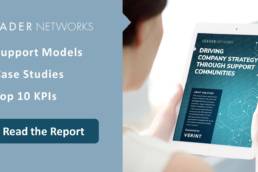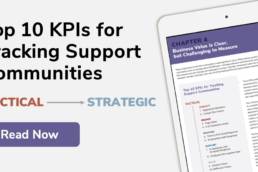I just got off the phone this morning with a colleague who is a friend, a senior marketing executive, a real big dog, who called to talk about building a professional network for his company’s top clients. “We are thinking about building a community for our company. I found a tool that is really great – its got blogs and other widget like components. We can do video!” I listened intently – yet have heard this story before. “Now what?” he asked, “How much shall I budget for this? How long will this take?”, the big dog asked.
I want this guy to succeed. I want his company to star in this social media dialogue with clients and with industry so I told him the facts.
Don’t get drunk on social media for technology sake. You need to begin with the end in mind. Online communities and professional networks need to be built with business intention.
The first step is to identify what the goals of the professional network are. What core business processes do you want to support with the community? What returns would you like to see from both a business and customer care perspective? You will need to discover what unmet needs there are in the organization and customer care efforts that you believe the community can help solve.
The second step is to talk to the prospective users of the community. Engage them – not about what features and functions they want, but in terms of where they feel pain in the customer care lifecycle.
Then map the business needs of the organization to the customer care needs of the clients and see where there is overlap. Decide whether your company is ready to forge forward into the brave new world of social media to support the needs of the users with a heightened commitment to transparency and customer co-creation and engagement.
Only then can you begin to define what the business model is for the professional network, find the right tools to support the model and go from there to build member acquisition plans, features and functions for the community and a user engagement model to create compelling reasons for members to get involved and continue returning.
Professional communities are not neutral. When they work, they fundamentally have the power to change the organizational structure and impact how the organization relates to its clients. They offer a new level of intimacy. Effective communities can change how marketing, sales and even product development engage. When effectively and thoughtfully executed, professional communities can accelerate learning and relationships in many ways. But your company has to be ready to embrace this new world of interactive collaboration.
1 Comment
Add comment Cancel reply
This site uses Akismet to reduce spam. Learn how your comment data is processed.



Ciao Vanessa,
it would be great to hear your opinion, if you care, about the project built by one of the people that I totally trust who’s a great professional-
Business Communities on-line host AGORK
http://www.agork.com
which seems to have a very similar motivation to what you are doing on your side!
I know very well the guy behind the project, Diego Vicamini
so I could organize your connection with him, if you care. Agork is an Italian project but already has some important customers (companies) worldwide. Could be a good match?
thank you in any case.
Andrey Golub- Spock Community Evangelist and Blogger
http://www.spock.com/Andrey-Golub